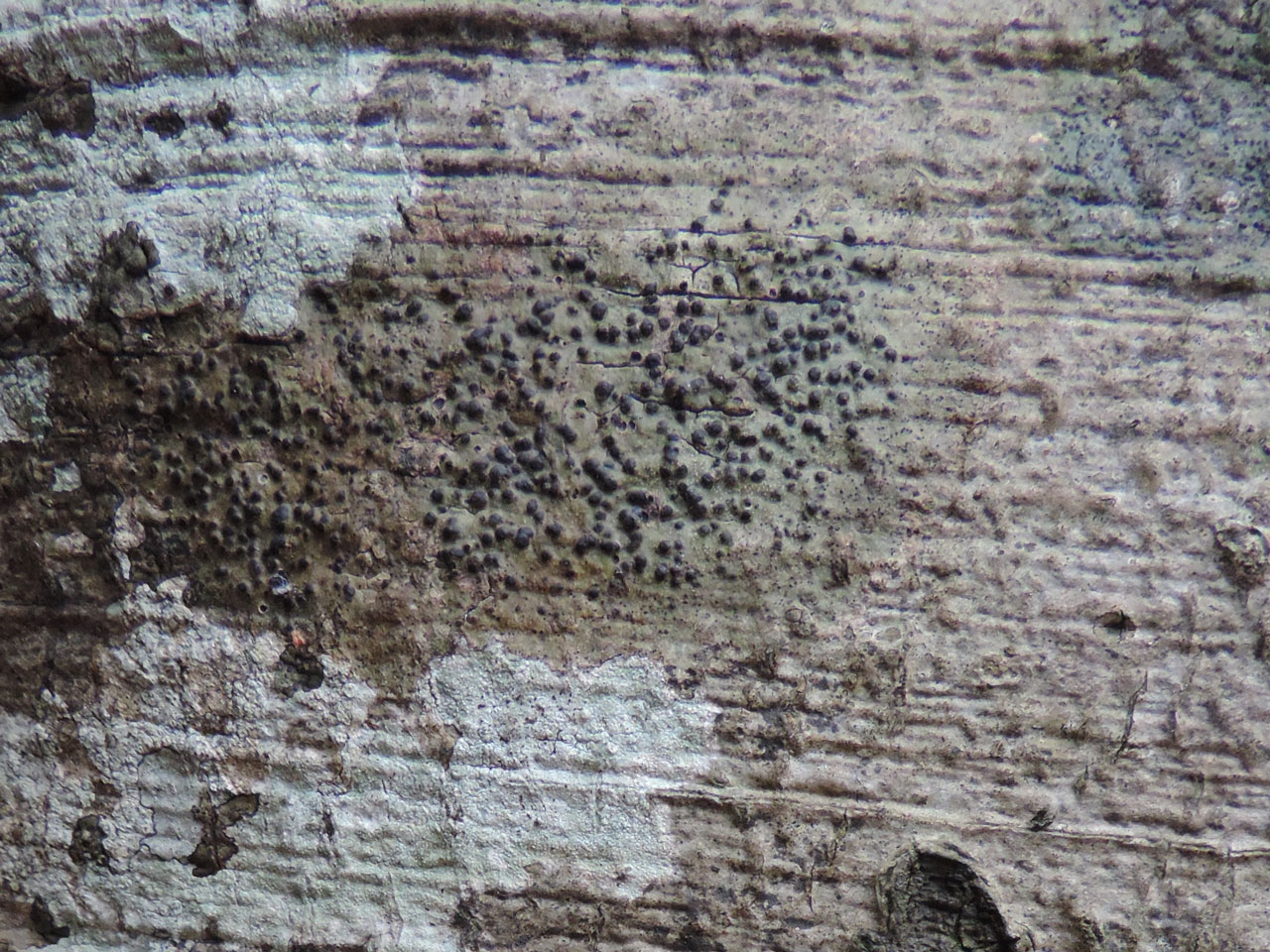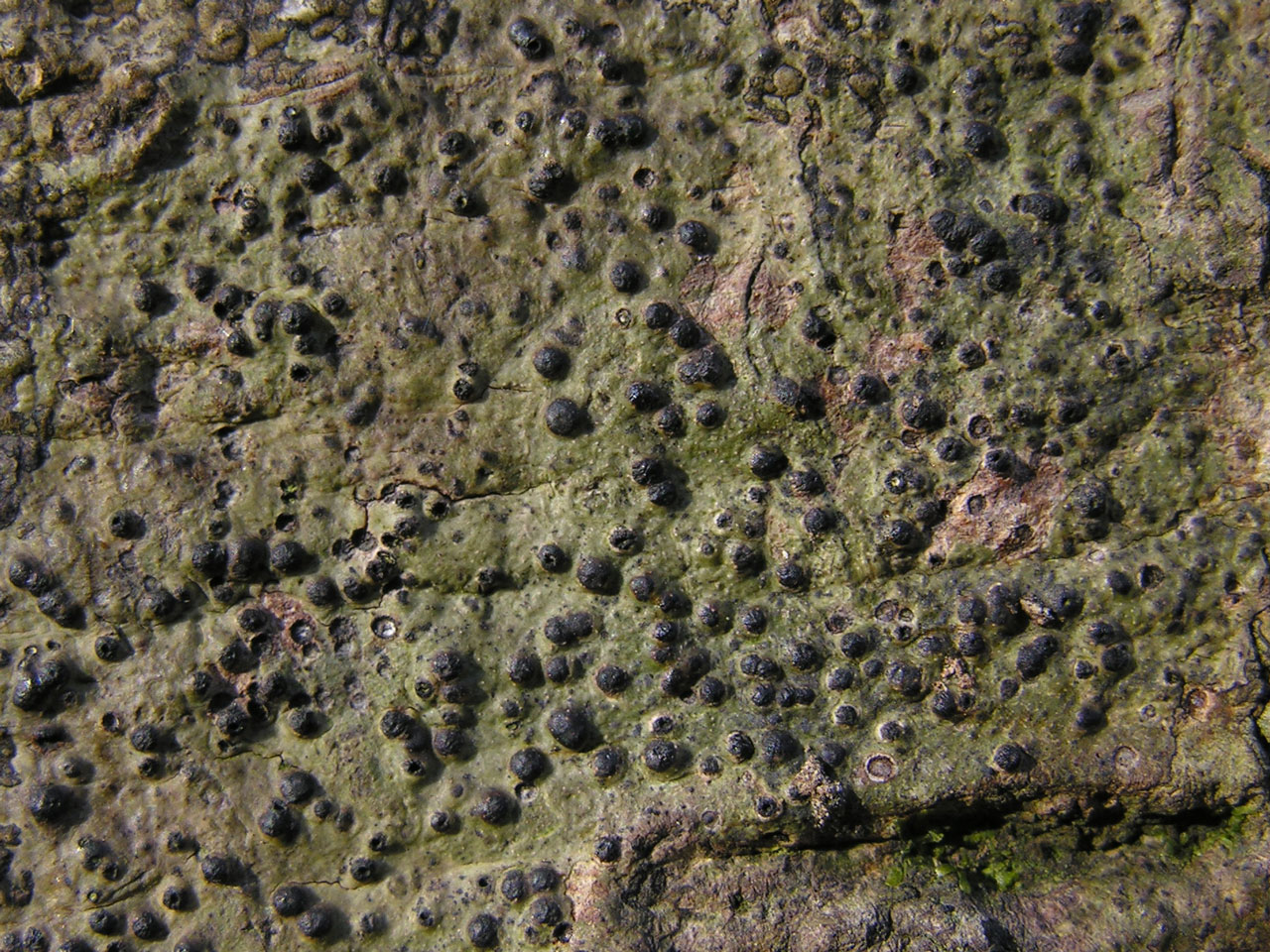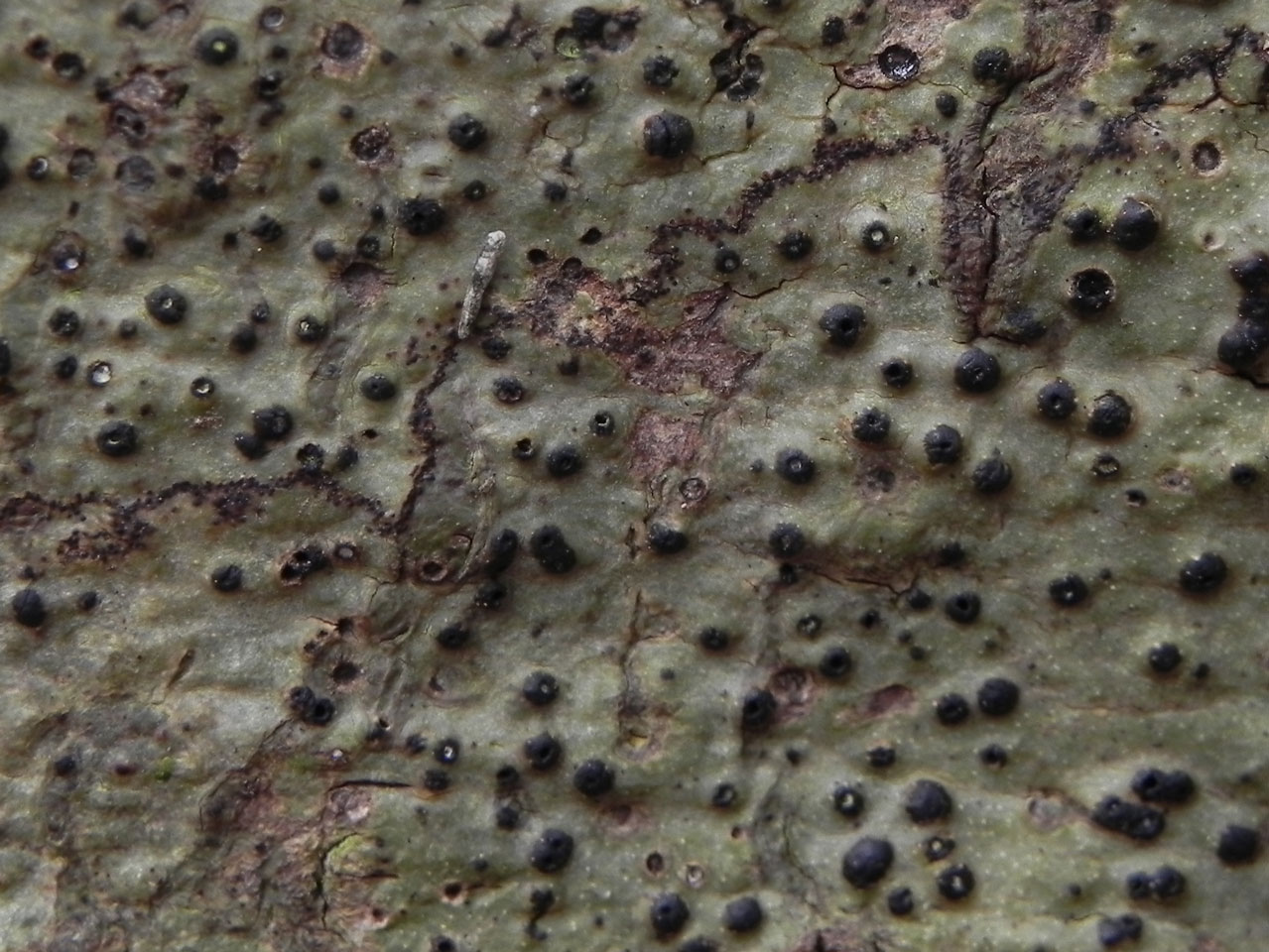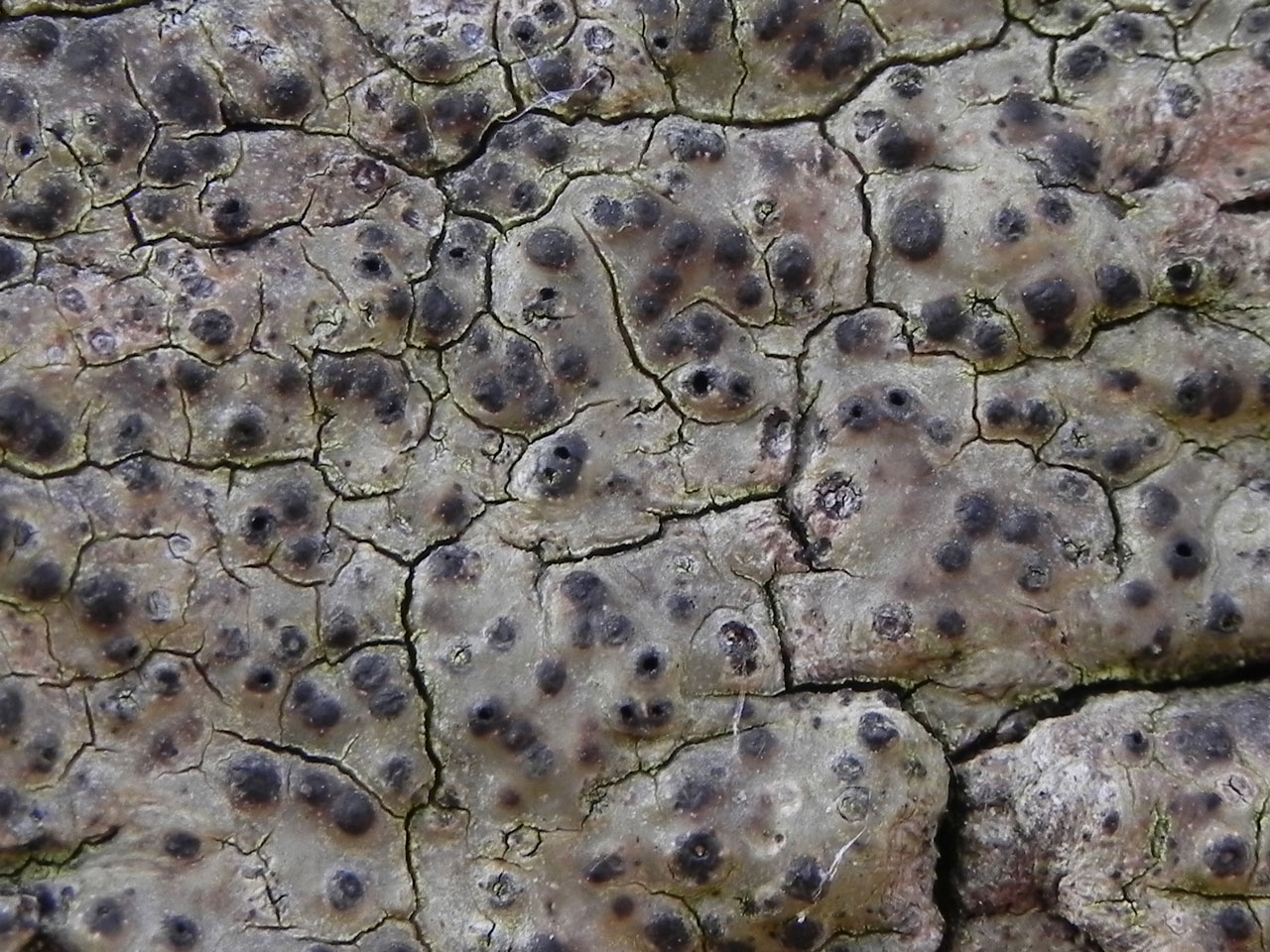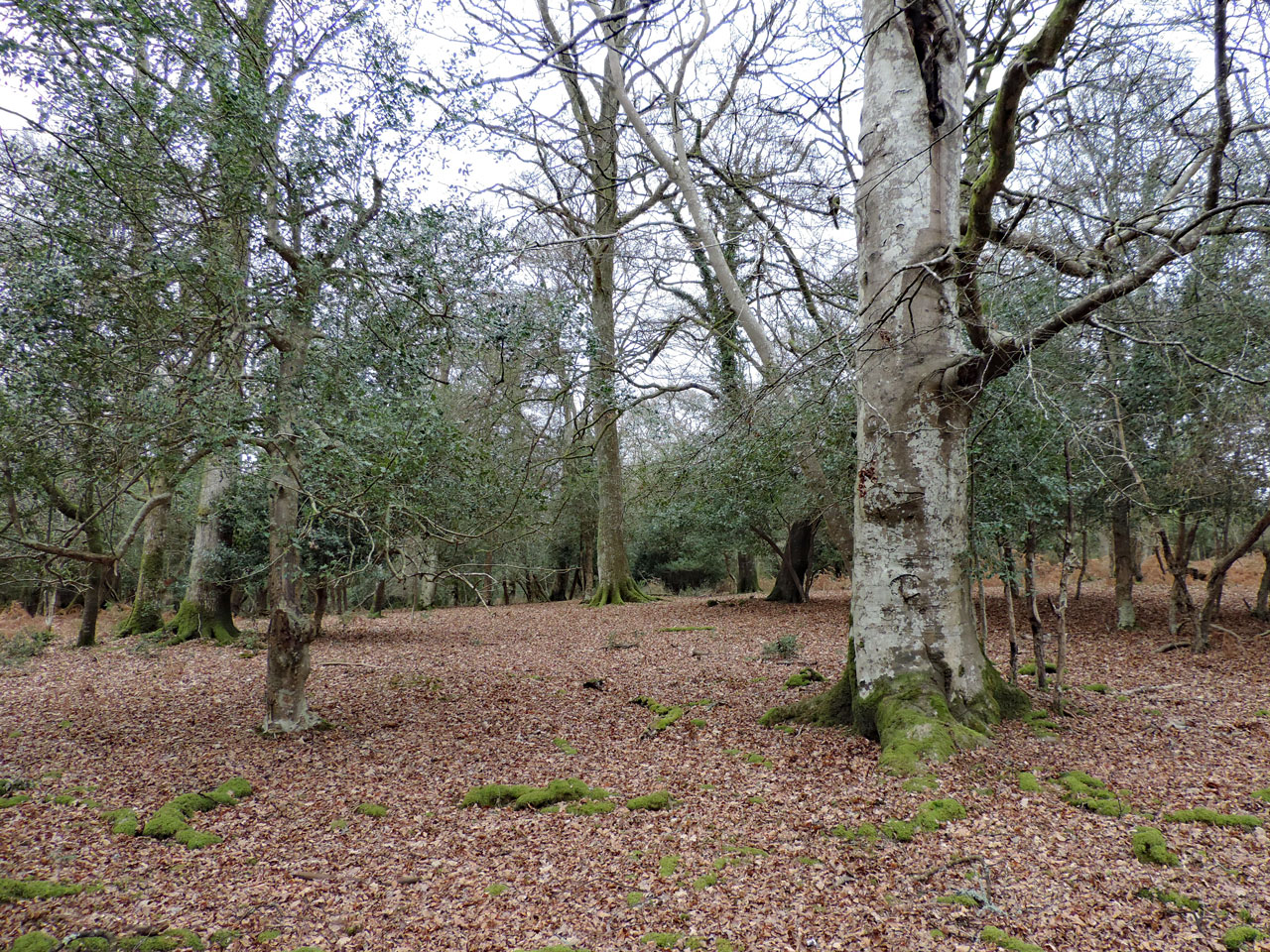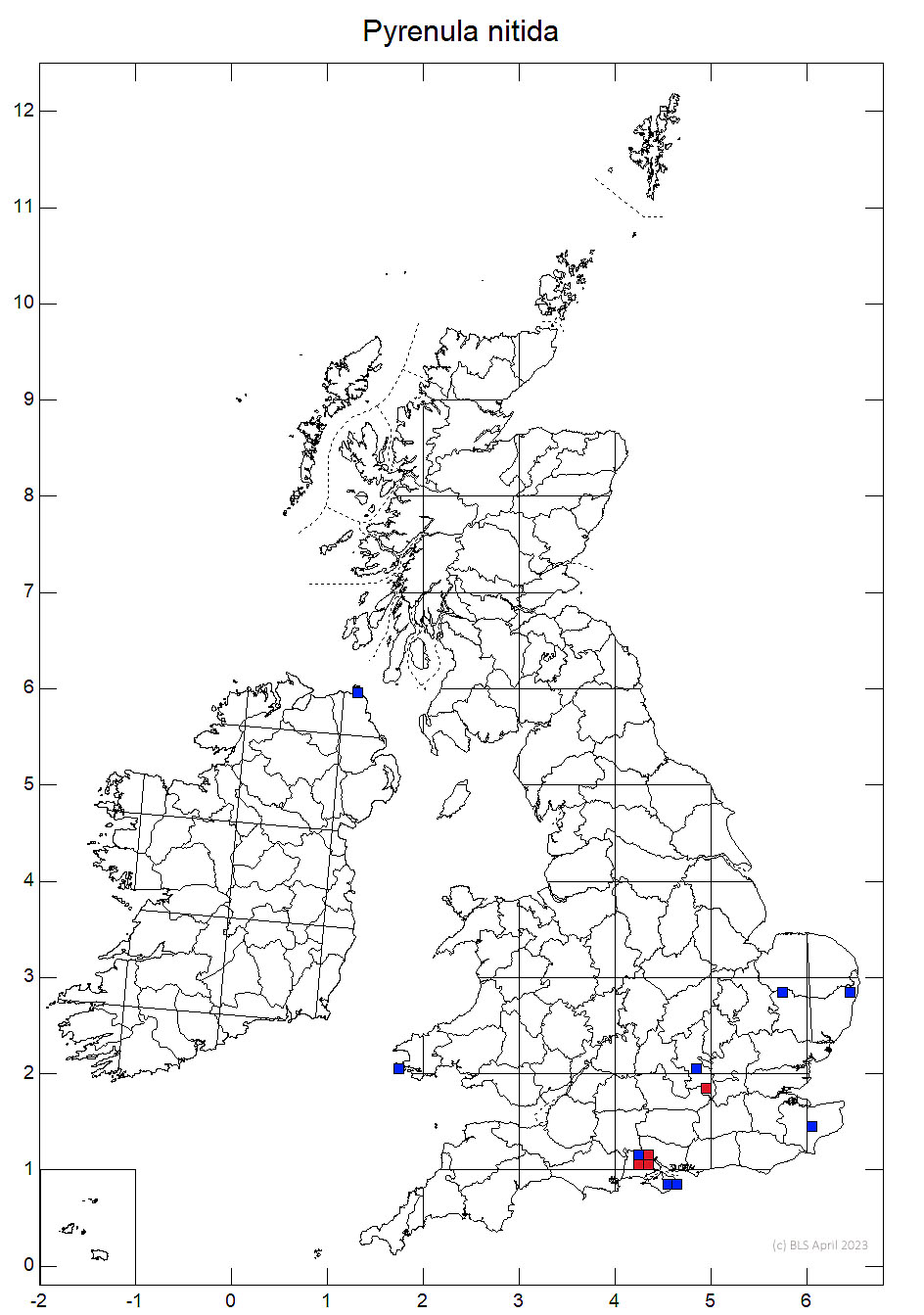Pyrenula nitida
A very similar species to Pyrenula macrospora, with similarly large perithecia, but much rarer. Pyrenula nitida is primarily a continental species, as reflected by its south eastern distribution in Britain. Field indications for this species are the lack or sparsity of pseudocyphellae and a typically uneven thallus surface rising up to the perithecia. The species can be confirmed by the K+ purple hymenium, which can be detected in the field. A very rare species with only two extant confirmed locations in old growth Beech pasture woodlands (New Forest & Burnham Beeches).
Thallus olive- to yellow- or dark brown, with an uneven surface, which rises to the perithecia; pseudocyphellae often absent, but sometimes frequent, 50–75 μm diam., whitish. Perithecia 0.6–0.8 (–1) mm diam.; exciple containing colourless crystals; outer part of hymenium adjacent to the exciple with orange-brown (by transmitted light) masses of anthraquinone, K+ purple-red going into solution; hymenium with or without sparse oil droplets. Ascospores (17–) 19–24 (–26) × 6–8 (– 9) μm, 3-septate. Conidia 16.5–19 × ca 0.8 μm, curved. Thallus C–, K+ orange-red, KC+ reddish, Pd–, UV± whitish (unidentified anthraquinones).
Most pre-1980 British records of this species refer to P. macrospora. P. nitida is primarily a continental species, as reflected by its distribution in Britain. The lack or sparsity of pseudocyphellae and a typically uneven thallus surface rising up to the perithecia are field indications for this species, the K+ purple hymenium with care can be detected in the field by crushing a single perithecium, applying K and drawing this into tissue.
On smooth, dry, shaded bark of old Beech and Hornbeam. Confined to veteran trees or slow growing suppressed trees.

Very rare. S. England, confirmed records only from Buckingham (Burnham Beeches), E. Kent (Ashford), Hampshire (New Forest) but potentially overlooked elsewhere in the south-east.
Currently known only from two locations (New Forest & Burnham Beeches), the Kent location, a parkland near Ashford, has been largely converted to intensive agriculture since the single record made in 1968 and there has been no record since. The New Forest population includes at least 104 Beech trees recorded since 2000 in two main sub-populations (Rushpole – Busketts & Mark Ash – Wood Cates – Gritnam – Knightwood) and a couple of small outlying populations (Puckpits & Burley Old) but it has not been refound at Vinney Ridge recently. At Burnham Beeches 17 trees were recorded in 2020 (Sanderson, 2020). At both sites dying or dead trees supporting Pyrenula nitida have been recorded but also the colonisation of new trees observed. In Burnham Beeches in particular there was a clear instances of recovery after the decline of sulphur dioxide pollution, with relic colonies expanding from rain track refuges into formerly bare acidified bark. In both areas shade from regenerating Holly or Beech is a threat, but is being reduced by grazing and cutting of excess regeneration.
Britain: Vulnerable
England: Section 41 Species
Cannon, P., Coppins, B., Aptroot, A., Sanderson, A. & Simkin, J. (2023). Perithecial genera I, including Acrocordia, Alloarthopyrenia, Anisomeridium, Antennulariella, Arthopyrenia, Celothelium, Cyrtidula, Dichoporis, Eopyrenula, Julella, Leptorhaphis, Leptosillia, Lithothelium, Mycomicrothelia, Mycoporum, Naetrocymbe, Pyrenula, Rhaphidicyrtis, Sarcopyrenia, Swinscowia and Tomasellia. Revisions of British and Irish Lichens 37: 1-59.
Sanderson, N. A. (2020) Lichen Survey of Burnham Beeches NNR, Buckinghamshire, 2020. A report by Botanical Survey & Assessment to Plantlife.
Text by Neil A Sanderson
